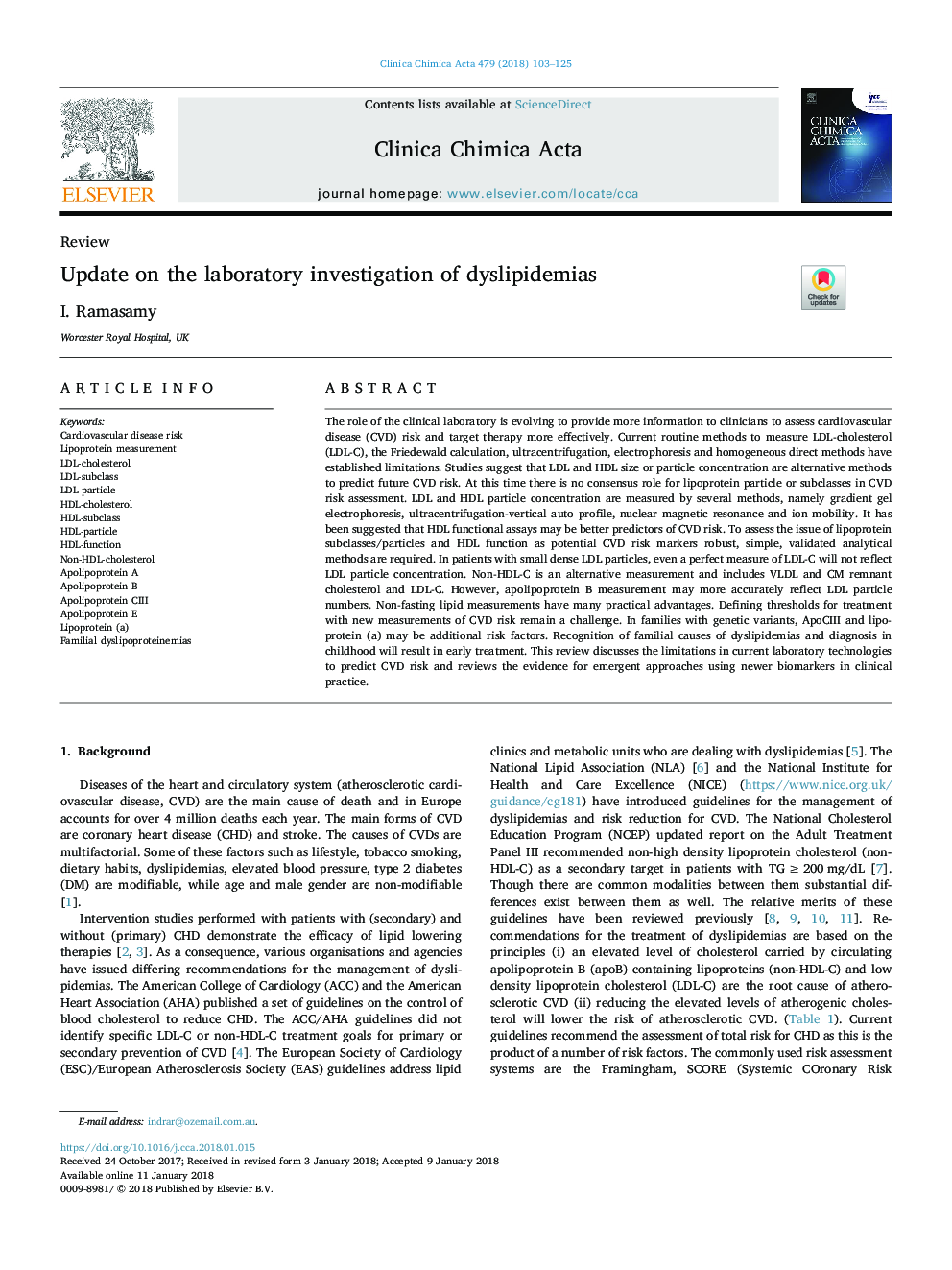| کد مقاله | کد نشریه | سال انتشار | مقاله انگلیسی | نسخه تمام متن |
|---|---|---|---|---|
| 8309626 | 1538620 | 2018 | 23 صفحه PDF | دانلود رایگان |
عنوان انگلیسی مقاله ISI
Update on the laboratory investigation of dyslipidemias
ترجمه فارسی عنوان
به روز رسانی در آزمایشات آزمایش دیس لیپیدمیها
دانلود مقاله + سفارش ترجمه
دانلود مقاله ISI انگلیسی
رایگان برای ایرانیان
کلمات کلیدی
Apolipoprotein CIIIApolipoprotein A - آپولیپوپروتئین AApolipoprotein B - آپولیپوپروتئین Bapolipoprotein E - آپولیپوپروتئین ECardiovascular disease risk - خطر بیماری قلبی عروقیNon-HDL-Cholesterol - غیر HDL-کلسترولLipoprotein (a) - لیپوپروتئین (a)HDL-cholesterol - کلسترول HDLLDL-cholesterol - کلسترول LDL
موضوعات مرتبط
علوم زیستی و بیوفناوری
بیوشیمی، ژنتیک و زیست شناسی مولکولی
زیست شیمی
چکیده انگلیسی
The role of the clinical laboratory is evolving to provide more information to clinicians to assess cardiovascular disease (CVD) risk and target therapy more effectively. Current routine methods to measure LDL-cholesterol (LDL-C), the Friedewald calculation, ultracentrifugation, electrophoresis and homogeneous direct methods have established limitations. Studies suggest that LDL and HDL size or particle concentration are alternative methods to predict future CVD risk. At this time there is no consensus role for lipoprotein particle or subclasses in CVD risk assessment. LDL and HDL particle concentration are measured by several methods, namely gradient gel electrophoresis, ultracentrifugation-vertical auto profile, nuclear magnetic resonance and ion mobility. It has been suggested that HDL functional assays may be better predictors of CVD risk. To assess the issue of lipoprotein subclasses/particles and HDL function as potential CVD risk markers robust, simple, validated analytical methods are required. In patients with small dense LDL particles, even a perfect measure of LDL-C will not reflect LDL particle concentration. Non-HDL-C is an alternative measurement and includes VLDL and CM remnant cholesterol and LDL-C. However, apolipoprotein B measurement may more accurately reflect LDL particle numbers. Non-fasting lipid measurements have many practical advantages. Defining thresholds for treatment with new measurements of CVD risk remain a challenge. In families with genetic variants, ApoCIII and lipoprotein (a) may be additional risk factors. Recognition of familial causes of dyslipidemias and diagnosis in childhood will result in early treatment. This review discusses the limitations in current laboratory technologies to predict CVD risk and reviews the evidence for emergent approaches using newer biomarkers in clinical practice.
ناشر
Database: Elsevier - ScienceDirect (ساینس دایرکت)
Journal: Clinica Chimica Acta - Volume 479, April 2018, Pages 103-125
Journal: Clinica Chimica Acta - Volume 479, April 2018, Pages 103-125
نویسندگان
I. Ramasamy,
